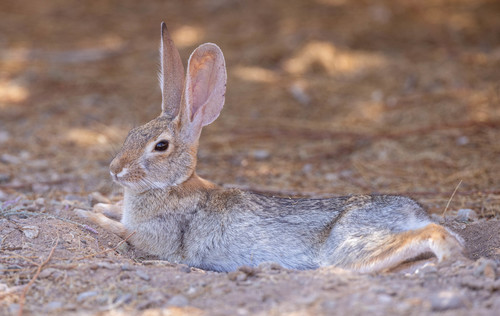
Desert Cottontail
The Desert Cottontail, or Sylvilagus audubonii, thrives in North America's arid terrains, sporting long ears and a white cotton-like tail. Swift and nimble, it forages at dawn and dusk, playing a crucial role in its ecosystem as both prey and herbivore.
1-3 years
Lifespan
Least Concern
Conservation Status
Decreasing
Population Trend
Distribution Range of the Desert Cottontail
Sylvilagus audubonii, commonly known as the Desert Cottontail, is native to North America. Its geographical distribution primarily includes parts of the southwestern United States and extends into Mexico. This includes states such as California, Arizona, New Mexico, Texas, and Nevada, reaching down into parts of central Mexico.
Desert Cottontail's Habitat
Environmental Conditions
The Desert Cottontail typically inhabits arid and semi-arid environments with varying temperatures, generally characterized by hot summers and mild winters. It is commonly found in deserts, scrublands, grasslands, and prairies. Vegetation in these areas may include sparse shrubs, cacti, and grasses, which provide food and cover.
Ecological Niche
Sylvilagus audubonii is a herbivore, primarily feeding on grasses, shrubs, and forbs. It plays a role in the ecosystem as both a prey species for predators like coyotes and birds of prey, and as a herbivore that helps to control vegetation growth. Desert Cottontails are well-adapted to their environment with behaviors and physiological traits that help conserve water, such as feeding at dawn and dusk to avoid heat stress, and utilizing shaded areas for protection during the hottest parts of the day.
Copyright @ Nature Style Limited. All Rights Reserved.
 English
English